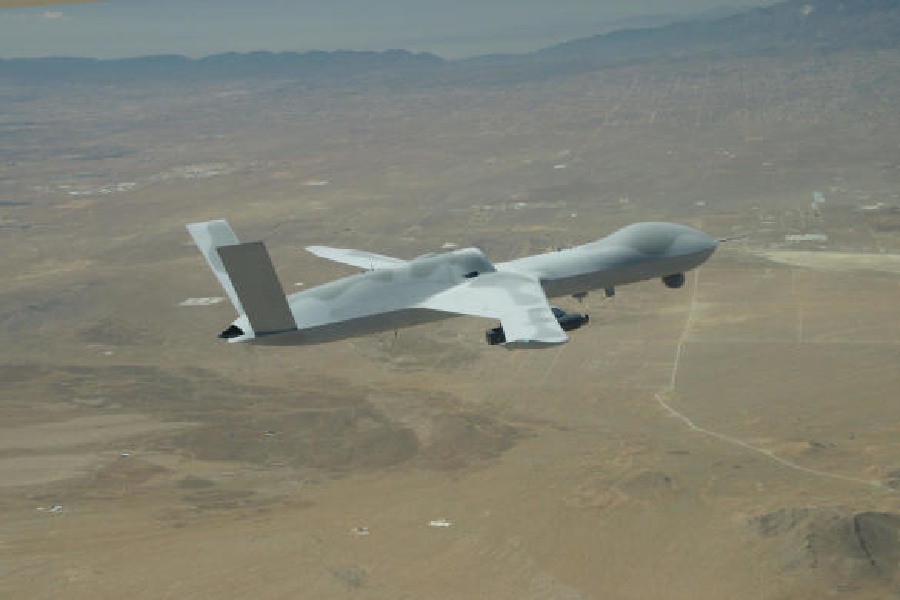The US air force is gambling big on artificial intelligence (AI). The world’s leading air arm plans to acquire a thousand AI-controlled armed drones in the coming years. It’s betting that these “loyal wingman” drones will be nimbler and cheaper than traditional manned fighter jets.
It’s a solid wager. A recent experiment proves why.
In early 2019, the US Defence Advanced Research Projects Agency (Darpa) — the Pentagon’s fringe-science agency — recruited eight teams of coders to develop the first-ever dog-fighting AI under the auspices of the AlphaDogfight project.
The competitors included major American defence firms such as Lockheed Martin and Boeing, smaller companies including Maryland-based Heron Systems and upstart squads from universities such as Georgia Tech.
In mid-2020, Darpa hosted a series of dogfighting competitions pitting the AIs against each other. And a few months after that, it deployed the most competitive AI — Heron’s — against an actual human: a US air force F-16 pilot who gave only his callsign, “Banger.”
Darpa broadcast the video-game-style contest online in a spectacle similar to an extreme sports event. Banger sat in a mockup of an F-16 cockpit and flew a simulated battle against another F-16 flown by the AI.
It ended quickly. After some hard turns, the Heron drone drew a bead on Banger and shot him down with simulated gunfire — and then repeated the feat in several subsequent mock fights.
The Heron AI’s secret was its aggression. The AI had stood out from the other algorithms owing to its preference for head-on attacks with its simulated gun. With its bold tactics, the Heron drone neutralised a human pilot’s main advantage over an artificial mind: creativity.
Early drone AIs “struggled with those adversaries that did something even just a little different”, said air force Lieutenant Colonel Justin Mock, an F-16 pilot who observed the initial Darpa trials. But Heron’s artificial pilot doesn’t have that problem.
In the AlphaDogfight contest, Heron’s code moved too fast for Banger to do anything surprising. “The standard things we do as fighter pilots aren’t working,” Banger complained as he got shot down in a simulated dogfight after a simulated dogfight.
After winning the Darpa dogfighting contest, Heron was an obvious candidate for acquisition by a larger firm. In 2021, California-based start-up Shield AI bought Heron.
Two years after that, Shield AI cut a deal with Kratos, a leading drone-maker in California, to add an improved version of the Heron AI to a drone called the XQ-58.
It’s not hard to see the strategy.
The 29-foot-long, jet-propelled XQ-58 is the main test vehicle for the US air force’s own AI experiment, Skyborg, which has been running for several years now.
The ultimate goal of Skyborg is to develop inexpensive loyal-wingman drones that can fly alongside manned fighters, adding their sensors and weapons to a chaotic and dangerous aerial battle. If a fight goes badly and a few drones get shot down, it’s no big loss for an air force that might have hundreds of replacements.
That the drones are expendable would give USAF commanders the option of acting more aggressively, and attacking heavily-defended airspace in ways that would almost certainly get human pilots killed.
“The idea of a robot wingman is that it can keep pace with manned planes, but be tasked out for parts of the mission that you wouldn’t send a human teammate to do,” said Peter W Singer, the author of several books about military technology.
The Skyborg programme is moving fast.
It passed an important milestone late last year when a test squadron in Florida took possession of the first of two government-owned XQ‑58s.
The Daily Telegraph, London










